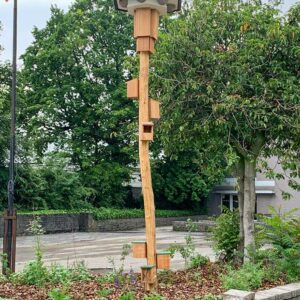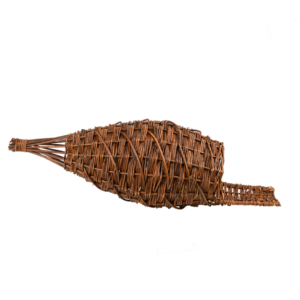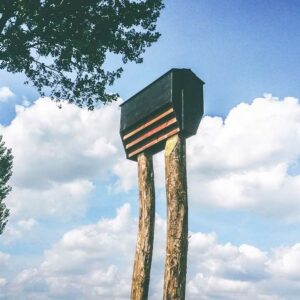Description
For barn owls, the nest box must be large, deep and dry. Barn owl chicks do not leave the nest until they are fully grown. There can be 3 to 5 young in a nest and they train their wings in the nest box, which takes up a lot of space. The height from the bottom to the access opening should be at least 45cm, which will prevent baby chicks from leaving the nest box before they are ready. The base surface is approximately 50x50cm or 70x70cm. Owls have a silent plumage that absorbs water like a sponge, making them very resistant to rain or moisture. The nest and eggs should be kept dry and warm at all times.
PLACEMENT
The nest box is ideally hung in a tree or placed on a pole of robinia wood, at a height between 4 and 6 m. It is important that the entrance is positioned out of the wind and out of the sun (do not orient it towards the south). At least 1 km away from a busy road. Furthermore, there must be mice in the area. The barn owl's diet consists of more than 90% mice. In bad mouse years, barn owls do not make a nest. They adapt their nest size to the food supply. Due to the increasing road network in Europe, traffic has become the number one cause of death. There is a peak especially in March when the males look for mice on roadsides for their young. To avoid predation by martens or other animals, the lower part of the pole can be wrapped with a smooth material such as aluminum. You can also provide extra protection for the nest by placing a marten- and cat belt around the tree or post.









